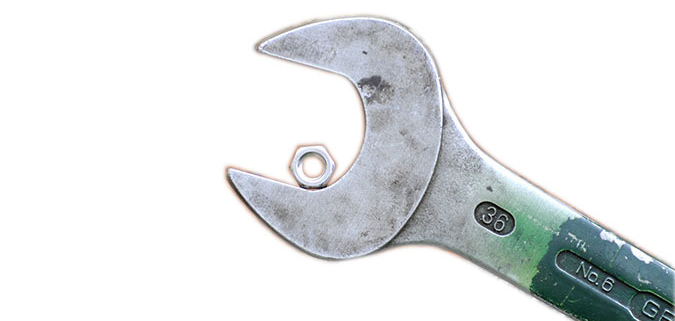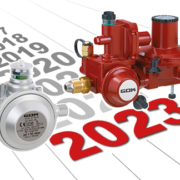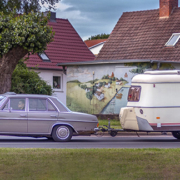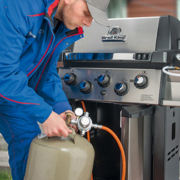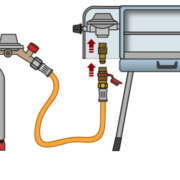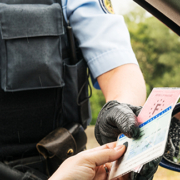What spanner size do coupling nuts on pressure regulators have for connecting to LPG cylinders in Germany?
Immediately after the gas cylinder, you generally need a pressure regulator, also known as a pressure reducer. At the pressure regulator itself, there is a coupling nut which the operator uses to create a tight seal on the gas cylinder.
It’s at this stage of the process that many people start their search for the right spanner. Spanner size 17, 19 or even bigger. In the following overview, you will see which spanner you need for which cylinder connection.
Mini cylinder
We’ll start with the mini cylinder, the gas cylinder with the lowest filling weight, 425 grams of propane/butane mixture fit into the cylinder, which is predominantly used by tradespeople – especially for roofing and plumbing work. You can screw a pressure regulator with inlet connector G 3/8 LH nut onto this cylinder valve. This corresponds to a spanner size of 19.
Small cylinder
This term covers the popular 5 and 11-kilogram gas cylinders. There are also a few more with different filling weights. On these cylinders in Germany, you always find a wing nut to tighten by hand, so you don’t have to use any spanner.
For a tight connection, we recommend using the practical aid known as a MiniTool.

The operator doesn’t need any spanner for a tight seal between the pressure regulator and the small cylinder (5 or 11 kilograms). It is recommended to use the MiniTool.
Large cylinder
The 33-kilogram gas cylinder is the largest cylinder commonly available in Germany, and it didn’t get its name for nothing. If you want to create a tight connection between the pressure regulator, excess flow device or high pressure hose assembly, you need a spanner with spanner size 30.

For example, 33-kilogram gas cylinders have a large cylinder connection. You need a spanner size of 30 to fasten a pressure regulator, excess flow device or high pressure hose assembly (see B).
Combo connection
The combo connection is designed so that it fits on 5, 11 and 33-kilogram cylinders, making it a kind of one-size-fits-all solution. To be able to connect the pressure reducer tightly to the cylinder connection, the operator needs a size 30 spanner.

It fits on a 5, 11 or 33-kilogram gas cylinder: the combo connection. The right spanner size is 30, the same as the large cylinder connection.
You can also find more information in the assembly and operating manual of the GOK product. We have summarised all inlet connectors common in Europe in an easy-to-read datasheet.
